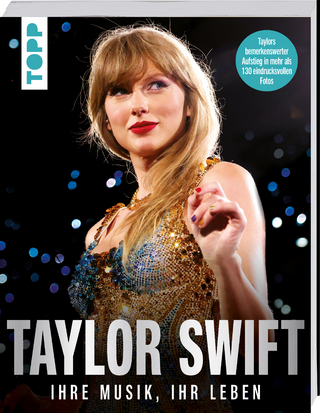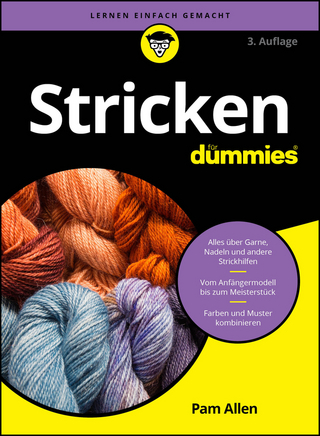
Inscriptions of the Medieval Islamic World
Seiten
2023
Edinburgh University Press (Verlag)
978-1-4744-8944-7 (ISBN)
Edinburgh University Press (Verlag)
978-1-4744-8944-7 (ISBN)
Showcases the best recent research on epigraphy across the medieval Islamic world
Explores Islamic epigraphy from a wide range of perspectives and geographical areas, from the Maghreb to India and Central Asia and beyond
Covers the period from the rise of Islam to the 15th century
Details 20 case studies of inscriptions found on a wide range of objects from coins, pen cases, textiles, tiles, pottery and wall paintings to public buildings, monuments, tombs, minarets, monasteries and madrasas
Beautifully illustrated with 200 colour photographs of inscriptions on buildings and objects
Includes contributions from some of the leading experts in the field including Jonathan Bloom, Robert Hillenbrand, Sheila Blair, Doris Behrens-Abouseif and Carole Hillenbrand
This volume offers an overview of the state of the field, and shows the importance of Islamic inscriptions for disciplines such as art history, history and literature. The chapters range from surveys to detailed exploration of individual topics, providing an insight to some of the most recent cutting-edge work on Islamic inscriptions. It focuses on the period from the rise of Islam to the fifteenth century, ranging across the Islamic world from the Maghreb to India and Central Asia, and inscriptions in Arabic, Persian and Turkish.
The five sections of the book draw together some of the principal themes: 'Royal Power' investigates the role of sultanic patronage in epigraphy, and the use of inscriptions for projecting royal power. 'Piety' examines the relationship between epigraphy and religious practice. 'Epigraphic Style and Function' explores the relationship between the use of specific epigraphic styles and scripts and the function of a monument. 'Inscribed Objects' moves from monumental inscriptions to those on objects such as ceramics and pen-cases. The final section considers the interplay between inscriptions and historical sources as well as the utility of inscriptions as historical sources.
Explores Islamic epigraphy from a wide range of perspectives and geographical areas, from the Maghreb to India and Central Asia and beyond
Covers the period from the rise of Islam to the 15th century
Details 20 case studies of inscriptions found on a wide range of objects from coins, pen cases, textiles, tiles, pottery and wall paintings to public buildings, monuments, tombs, minarets, monasteries and madrasas
Beautifully illustrated with 200 colour photographs of inscriptions on buildings and objects
Includes contributions from some of the leading experts in the field including Jonathan Bloom, Robert Hillenbrand, Sheila Blair, Doris Behrens-Abouseif and Carole Hillenbrand
This volume offers an overview of the state of the field, and shows the importance of Islamic inscriptions for disciplines such as art history, history and literature. The chapters range from surveys to detailed exploration of individual topics, providing an insight to some of the most recent cutting-edge work on Islamic inscriptions. It focuses on the period from the rise of Islam to the fifteenth century, ranging across the Islamic world from the Maghreb to India and Central Asia, and inscriptions in Arabic, Persian and Turkish.
The five sections of the book draw together some of the principal themes: 'Royal Power' investigates the role of sultanic patronage in epigraphy, and the use of inscriptions for projecting royal power. 'Piety' examines the relationship between epigraphy and religious practice. 'Epigraphic Style and Function' explores the relationship between the use of specific epigraphic styles and scripts and the function of a monument. 'Inscribed Objects' moves from monumental inscriptions to those on objects such as ceramics and pen-cases. The final section considers the interplay between inscriptions and historical sources as well as the utility of inscriptions as historical sources.
Bernard O'Kane is Professor of Islamic Art and Architecture at the American University in Cairo. He is the author of Timurid Architecture in Khurasan (1987), Studies in Persian Art and Architecture (1996) and Early Persian Painting (2003); and the editor of Treasures of Islamic Art in the Museums of Cairo (2006).A.C.S. Peacock is Professor of Middle Eastern and Islamic History at the University of St Andrews, and holds a PhD from the University of Cambridge. His previous publications include The Great Seljuk Empire (2015) and Early Seljuq History (2010).Mark Muehlhaeusler is a Senior Instructor at the American University in Cairo.
| Erscheinungsdatum | 10.07.2023 |
|---|---|
| Reihe/Serie | Edinburgh Studies in Islamic Art |
| Zusatzinfo | 200 colour illustrations |
| Verlagsort | Edinburgh |
| Sprache | englisch |
| Maße | 170 x 244 mm |
| Themenwelt | Kunst / Musik / Theater ► Kunstgeschichte / Kunststile |
| Sachbuch/Ratgeber ► Freizeit / Hobby ► Kreatives Gestalten | |
| Technik ► Architektur | |
| ISBN-10 | 1-4744-8944-3 / 1474489443 |
| ISBN-13 | 978-1-4744-8944-7 / 9781474489447 |
| Zustand | Neuware |
| Informationen gemäß Produktsicherheitsverordnung (GPSR) | |
| Haben Sie eine Frage zum Produkt? |
Mehr entdecken
aus dem Bereich
aus dem Bereich


